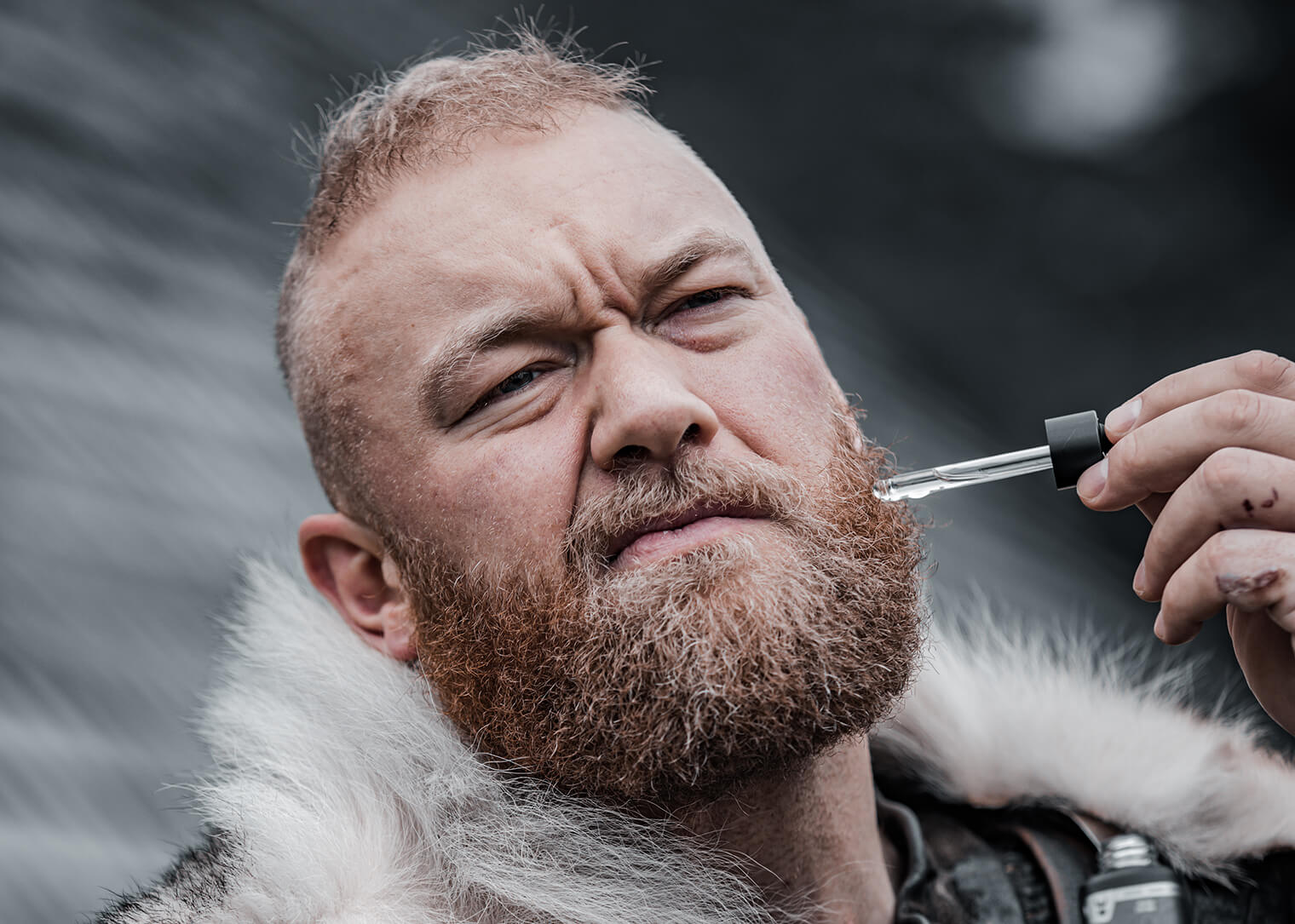Author: Faiysal Kothiwala
Published at: Dec 09, 2024
Beard dandruff, also known as seborrheic dermatitis or simply "beardruff," is a common condition that occurs when the skin underneath your beard becomes dry, itchy, and flaky.
This can be caused by various factors, such as poor hygiene, dry weather, or an overgrowth of yeast or bacteria on your skin. Beard dandruff can adversely affect your beard growth journey by making the process highly uncomfortable and maintaining a beard unenviable.
If you are someone who is suffering from the afflictions of beard dandruff or just wants to improve your knowledge to exercise the necessary precautions against a potential beard dandruff problem, then you are in the right place.
In this article, we will identify its likely causes and give pragmatic remedial measures which will help you in making informed decisions and making the right choices in your beard growth journey.
Beard dandruff can be caused by two major factors: dry skin and fungal infections. Dry skin is often the result of harsh cleansers or soaps, which can strip the oils from the skin and beard that keep it nourished and supple. Extreme temperatures, both cold and warm, can also contribute to dryness and flakiness. While dry, flaky skin is common and difficult to avoid entirely, it is a significant cause of beard dandruff.
Another factor that can cause beard dandruff is fungal infections, although this is less common. These infections occur when yeast naturally living on your skin is deprived of sunlight. Sunlight typically slows or kills fungal growth, but when a beard blocks sunlight, the fungus can grow and lead to dry, flaky skin. An overgrowth of yeast or bacteria on the skin underneath your beard can also cause irritation, redness, and flakiness.
There are several potential lifestyle-related causes of beard dandruff. Here are some common factors that may contribute to the development of this condition:
Poor hygiene: Failing to wash your beard regularly can lead to the buildup of dirt, oil, and dead skin cells on the skin underneath your beard. This can cause dryness and flakiness.
Cold and dry weather: Exposure to cold, dry air can strip moisture from your skin, leading to dryness and flakiness.
Hormonal imbalances: Hormonal imbalances, such as those that occur during puberty or if you have high levels of human growth hormone, can lead to an increase in sebum production. Sebum is an oil produced by the skin that can contribute to developing dandruff.
Skin conditions: Certain skin conditions, such as psoriasis and eczema, can cause dryness and flakiness on the skin, including the skin underneath your beard.
Stress: Chronic stress can weaken the immune system, making it more difficult for your body to fight off infections and other skin conditions.
Diet: A diet that is low in essential fatty acids and high in sugar and saturated fats can contribute to the development of dandruff.
By understanding the potential causes of beard dandruff, you can take steps to prevent and treat the condition. This may include maintaining good hygiene, using specialized beard products, avoiding harsh chemicals, and making lifestyle changes to support healthy skin. In more severe cases, you may need to consult with a dermatologist to receive prescription treatments.
If you want to get rid of beard dandruff, exfoliation can be a helpful technique. Exfoliating helps to remove dead skin cells, including those that cause dandruff. To incorporate exfoliation into your routine, consider using a beard scrub with soft bristles. This can help get rid of dead skin cells while also distributing oils from your skin, making your beard hair softer and more manageable.
When using a beard brush for exfoliation, gently massage the skin under your beard with the scrubber before cleaning your beard. It's important to avoid scrubbing too hard, as this can make dandruff worse. By adding exfoliation to your routine and using a gentle touch, you can help keep your beard and skin healthy and free of dandruff.

Regularly washing your beard is crucial when it comes to getting rid of beard dandruff. However, it's important to choose a product that won't strip away the natural oils from your skin and face. Using a regular shampoo or soap that you use for the hair on your head or skin won't suffice for washing your beard. The hair in your beard is generally thicker and curlier than the hair on your head, so you need a specific Beard Wash or Shampoo that is designed for facial hair. These products are formulated to be gentle and won't strip away your healthy and protective natural skin oils.
While washing your beard, gently massage the Beard Wash or Shampoo into your beard, making sure it reaches the skin underneath. Wait a minute or two before rinsing it out. It's important to avoid using extra hot water, as this can dry out and further irritate your skin.
By using a Beard Wash or Shampoo and being gentle with your washing technique, you can effectively clean your beard without causing dryness or irritation that can lead to dandruff.

Moisturizing your beard is a crucial step in getting rid of dandruff. This process helps to rehydrate and protect your skin after shampooing. While lotion may come to mind when you think of moisturizing, it can be challenging to apply your beard without leaving a residue. Therefore, using beard oil is recommended.
To apply the moisturizer, begin by rubbing a few drops of oil between your hands. Massage it into the skin under your beard, working it through to the ends of your beard. To avoid any buildup, start with one or two drops and add more if necessary. It's best to apply the moisturizer immediately after cleansing to allow it to penetrate the skin and beard effectively.
By moisturizing your beard regularly, you can help prevent dryness and flakiness that can lead to dandruff. Beard oils are formulated with natural ingredients that nourish and protect your skin and beard, leaving it soft, healthy, and well-moisturized.
Tonic + Elixir Beard Oil Bundle

It's not a good idea to leave your beard wet after a shower or being exposed to rainwater. Depending on the pH level of the water, it can dry out your beard and promote fungal infections. It's crucial to avoid being too aggressive when drying your beard, whether with a towel or hair dryer. Over-drying or using high heat can damage the hair follicles, leading to dryness and breakage.
To avoid these problems, it's recommended to use the lowest setting when blow-drying your beard and to be gentle when using a towel. Vigorously rubbing your beard with a towel can damage the follicle root, leading to breakage. By being gentle and careful when drying your beard, you can help maintain its health and prevent dandruff.
 How Can I Prevent Beardruff From Coming Back? ---------------------------------------------
How Can I Prevent Beardruff From Coming Back? ---------------------------------------------
Preventing beard dandruff from coming back requires consistent care and maintenance. Here are some tips that can help:
Keep your beard clean: Regularly wash your beard with a Beard and Face Wash specifically designed for facial hair to remove any dirt, oils, or dead skin cells that can contribute to dandruff.
Moisturize regularly: Applying a Beard Oil or Beard Balm every day can help keep your beard and skin hydrated, reducing the likelihood of dryness and flakiness.
Avoid harsh chemicals: Be careful when choosing beard grooming products. Avoid harsh chemicals that can strip your skin and beard of natural oils and cause dryness.
Brush your beard daily: Brushing your beard daily with a soft-bristled brush helps exfoliate the skin, increase blood flow, and distribute natural oils throughout your beard.
Stick to these steps and you'll be on your way to a healthier and flake-free beard.
If you have tried all the aforementioned methods and still experience beard dandruff, it is advisable to consult a dermatologist or a healthcare professional. An underlying skin condition might be the root cause of dandruff. It is important to differentiate between regular dandruff (seborrheic dermatitis), and other skin conditions like eczema and seborrheic psoriasis, which are characterized by skin flakes, greasy skin patches, white or yellow scales or crust, redness, and persistent itching.
If you experience any of these symptoms, it is essential to seek medical attention, especially if your symptoms cause a loss of sleep or hinder your ability to function normally.
Additionally, if you feel anxious due to the severity of dandruff or scales, or if your skin shows signs of infection, you should see a doctor immediately. If over-the-counter shampoos and home remedies fail to improve your symptoms, it is also important to seek professional medical advice.
Beard dandruff is a common problem that can be a nuisance to deal with, but it doesn't have to be a barrier to achieving your beard growth goals. The right knowledge and beard care routine can help you effectively manage and overcome this issue. Neglecting beard dandruff can lead to more serious skin conditions, and can even hinder the growth and health of your beard.
So, take the necessary steps to maintain a clean and healthy beard, including regular washing, exfoliation, moisturizing, and gentle drying. And if the problem persists, don't hesitate to seek advice from a dermatologist or medical professional. With the right approach, you can enjoy a healthy and dandruff-free beard, and continue on your beard growth journey with confidence.
Comments